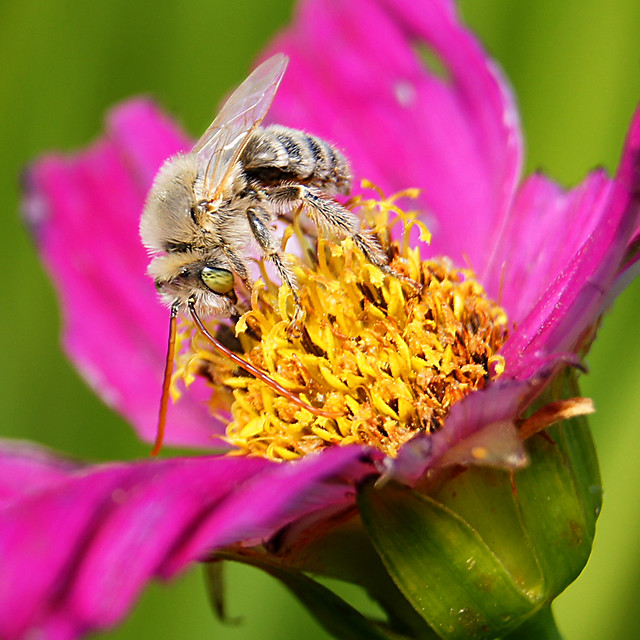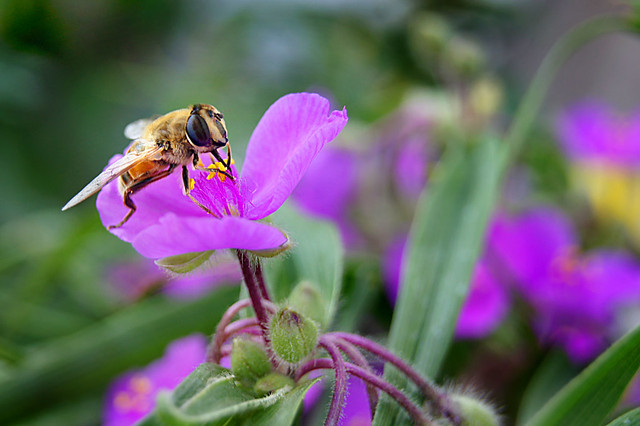Bee
Blind Side Attack
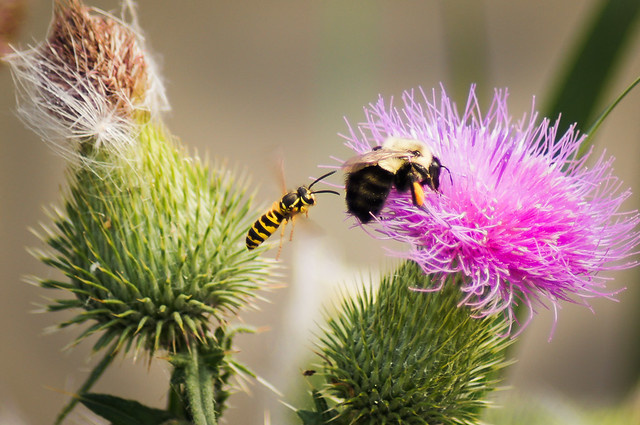
While working over a purple thistle, this bumble bee was attacked from behind by another competitor. The skirmish was short and seemed pretty insignificant. After bouncing off the backside of the busy bee, the aggressor simply flew away. I’m guessing, it flew off to look for someone more its own size to pick on.
To view more of the detail in a larger version, simply click on the image.
On a Mission
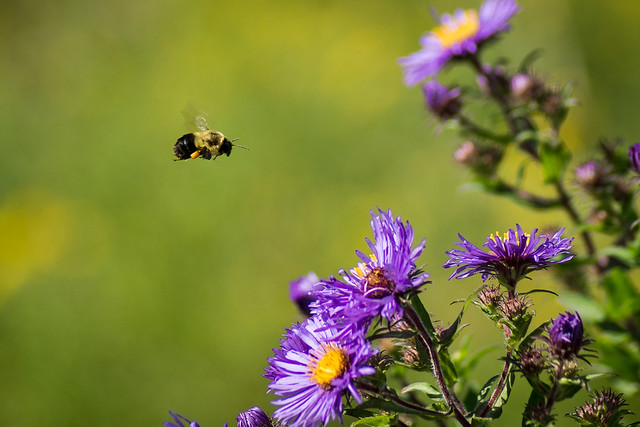
I’m always taking photos of bugs – and bees are some of my favorites. I usually catch bees busy about their business, working on flowers. It’s rare when I can capture one in flight, and even rarer to catch them in focus. This was one of those rare moments.
A couple of other images where I was able to catch bees in flight are Popular Spot and The Beeline.
To get a closer view, click on the image.
Honey Bee on Sedum
Watchful Eye
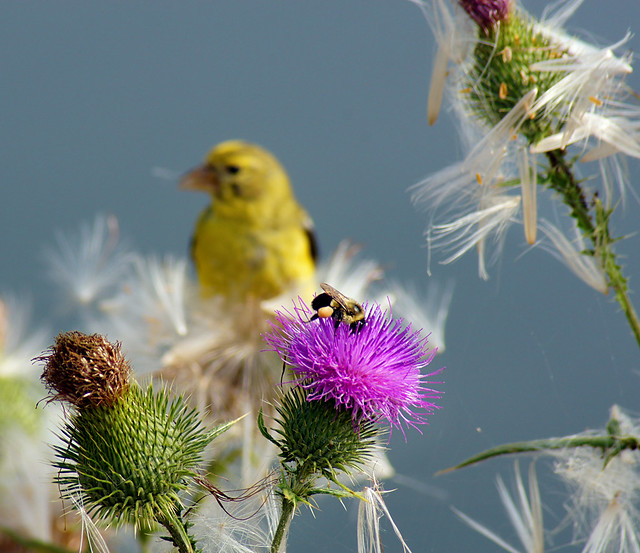
Here’s a little touch of nature for you. I stopped to take some photos around the harbor at Algoma, Wisconsin. It wasn’t a foggy day elsewhere, but conditions were right to create a foggy area around the piers and lighthouse. I took a few photos (some I’ll be posting later) of the pier and a fisherman in the fog, and the lighthouse and boats.
As I finished and headed back to my vehicle, I noticed a few wildflowers growing near the water. I stopped to take a few random shots. Then I noticed a few bees – always a favorite photographic subject of mine – so I stopped to take a few photos of them. Then, as I started to leave again, I noticed a flash of yellow. An American Goldfinch landed in a nearby patch of thistles to enjoy a meal. It didn’t seem bothered by my presence, so I started taking photos. (Some I’ll post later.)
While concentrating on the Goldfinch, I happened to notice a bee in the foreground and refocused on the bee for awhile…as the bird continued to feast in the background.
The one thing I don’t like about this image (and others in the batch) is the background. I think it looks unnatural and fake. The background is simply the water of the harbor. I would have preferred something that had a little more color variation, instead of the flat blue, but I wasn’t able to change my position to create a different look. The thistles were only a foot or two from the water and I was shooting from a position higher than the bird.
If you’d like to see a larger version, just click on the photo.
This photo, and another cropped version, is available for sale. To see pricing, click on the blue bar below.
Covering the Cosmos
We planted a patch of wildflowers next to our vegetable garden. Unfortunately, the weeds are out performing the flowers. Out of the several varieties that made up the wildflower mix we planted, the cosmos did best. This is one that attracted some of the local wildlife.
If you have a large monitor and would like to get an even closer look, click on the image and it will open in another tab.
Center of the Cosmos
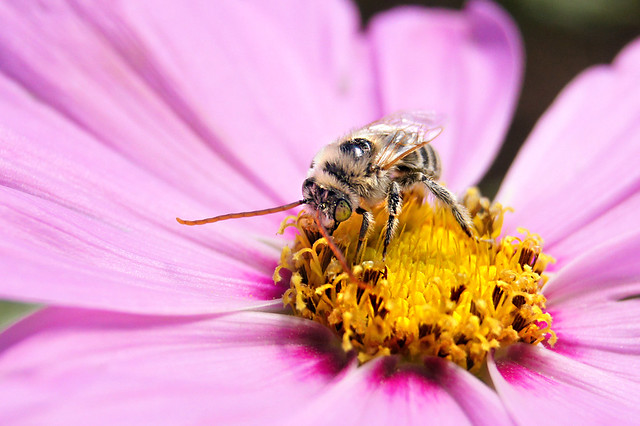
This bee was about some serious bee work on the center of a purple cosmos flower. I don’t recall seeing this particular type of bee before – with white hair, orange antennae and a yellowish-green eye. However, this year I’ve photographed several.
To get a better view of this bee and the flower, click on it and a larger version will open in a new tab.
Three’s a Crowd
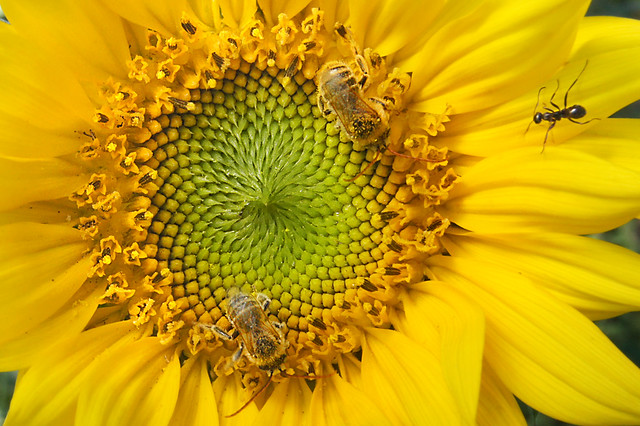
A couple of bees were working on this Sunflower when an ant decided to enter the picture. This is a flower in my wife’s flower bed. Not a flower she planted. One that was added by the birds dropping seeds from the feeders.
To see it larger, click on the image and it will open up in a new browser tab.
Popular Spot
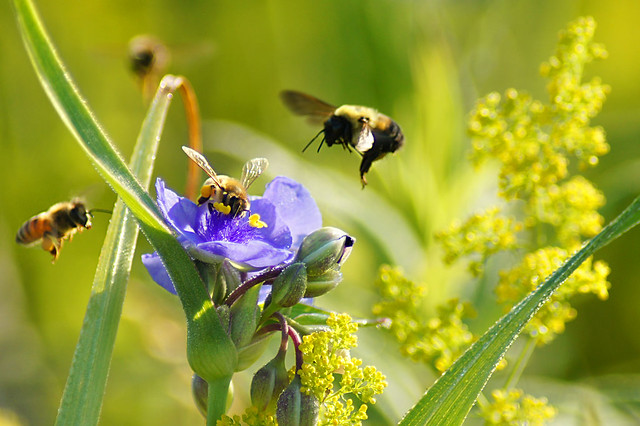
Flowers are blooming and the bees are buzzing. This proved to be a popular spot in the meadow. Honey bees and bumble bees were frequenting this clump of purple spiderswort. It was early morning – maybe 6:30 (notice the dew still on the plants) – and they were already hard at it.
To get this shot, I put my camera on a tripod and simply focused on a colorful, well lit clump of flowers and waited. When a bee would enter into the scene, I would start clicking. The bees you see here are exactly how I photographed them…but they were never in the shot together. Since the focus and framing never changed, it was easy to combine the various bees from separate images into one.
To get a better view of the image details, click on it and a larger version will open in another tab.




















































